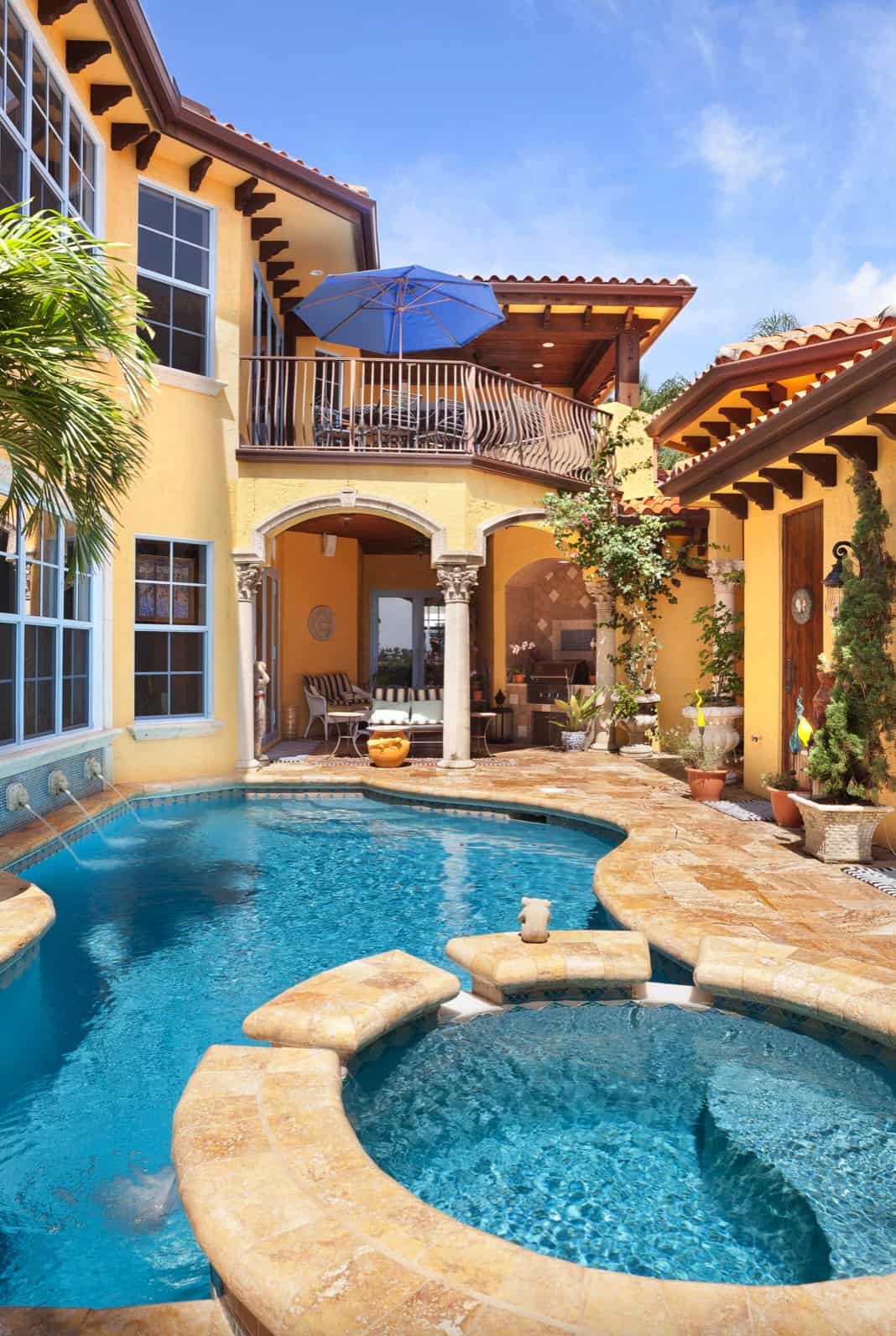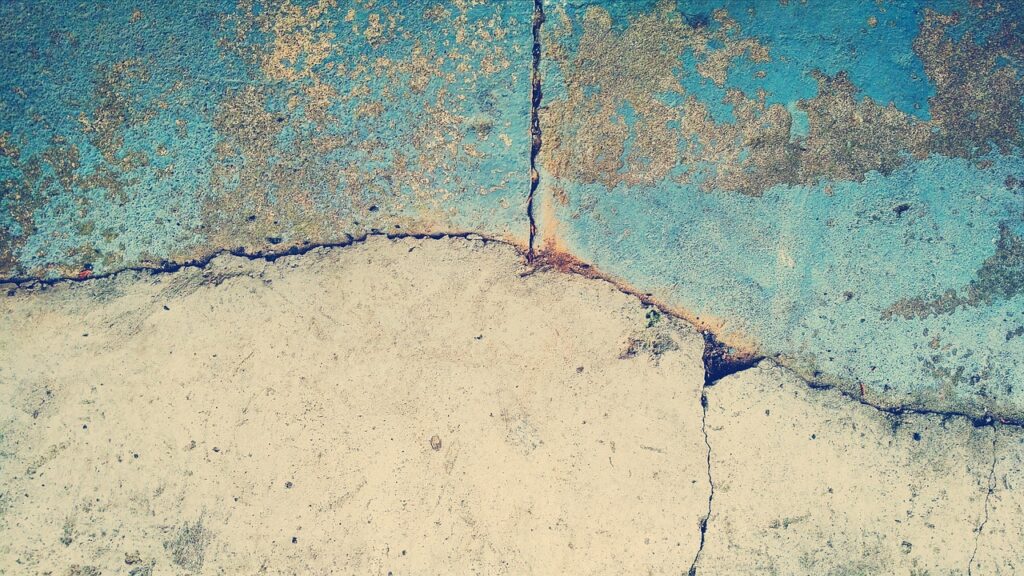Hey there! Have you ever wondered if an above ground pool can crack a concrete slab? Well, in this article, we’re here to address that question and put your worries to rest. We’ll explore the potential impact an above ground pool may have on a concrete slab and discuss whether it’s something you should be concerned about. So, let’s dive right in and find out if your concrete slab is safe from any potential cracking caused by an above ground pool.
Factors that can cause a concrete slab to crack
Weight and pressure
One factor that can cause a concrete slab to crack is the weight and pressure exerted on it. Concrete slabs are designed to bear a certain amount of weight, and if that weight exceeds the slab’s capacity, it can lead to cracking. For example, if heavy machinery is placed on a concrete slab that is not reinforced or designed to withstand such weight, it can result in cracks.
Settling and shifting
Another factor that can cause concrete slabs to crack is settling and shifting of the ground beneath them. Over time, the soil beneath a concrete slab may compact or shift due to natural factors such as erosion, changes in moisture content, or even seismic activity. When the ground settles or shifts unevenly, it can put stress on the concrete slab, leading to cracks.
Temperature changes
Temperature changes can also contribute to the cracking of concrete slabs. Concrete is known to expand and contract with changes in temperature. When exposed to extreme heat or cold, the concrete slab will expand and contract accordingly. If the expansion or contraction is excessive or happens too rapidly, it can result in cracks in the slab.
Moisture and water damage
Moisture and water damage are significant culprits when it comes to concrete slab cracks. Water can seep into the concrete and make it weaker over time, leading to cracks and deterioration. Additionally, if the ground beneath the concrete slab becomes saturated with water, it can cause the soil to expand and put pressure on the slab, leading to cracking.
Types of concrete slabs
Reinforced concrete slabs
Reinforced concrete slabs are designed with reinforcement materials such as rebar or mesh embedded within the concrete. This reinforcement adds strength and helps distribute the weight evenly, reducing the likelihood of cracks. Reinforced concrete slabs are commonly used in areas where heavy loads or traffic are expected.
Non-reinforced concrete slabs
Non-reinforced concrete slabs, as the name suggests, do not have any additional reinforcement. While they can still be structurally sound, they are more prone to cracking under heavy loads or other factors that cause stress on the slab. Non-reinforced concrete slabs are commonly used for residential driveways or walkways.
Pre-stressed concrete slabs
Pre-stressed concrete slabs are manufactured with tensioned steel strands or cables that are embedded in the concrete before it cures. This pre-stressing technique puts the concrete slab under compression, which helps resist tensile forces and limits cracking. Pre-stressed concrete slabs are often used in large commercial or industrial applications.
Post-tensioned concrete slabs
Post-tensioned concrete slabs are similar to pre-stressed slabs, but the tensioning of the steel strands or cables occurs after the concrete has cured. This method allows for more flexibility in construction and can be used to create unique shapes or spans. Post-tensioned concrete slabs are commonly used in high-rise buildings or bridge construction.
This image is property of pixabay.com.
Installation considerations
Ground preparation
Proper ground preparation is crucial for preventing cracks in concrete slabs. Before pouring the concrete, it is essential to ensure the ground is adequately compacted, free from debris, and appropriately graded to promote proper drainage. Any organic materials or loose soil should be removed, and the ground should be well-compacted to minimize settling or shifting.
Base and subbase support
The base and subbase layers provide support to the concrete slab and help distribute the weight evenly. A stable and properly prepared base and subbase are vital for preventing cracks. Typically, a layer of compacted gravel or crushed stone is used as the base, with a subbase layer of larger stone or gravel beneath it. This provides a solid foundation for the concrete slab.
Proper leveling
Ensuring the concrete slab is properly leveled is essential for preventing cracks. Uneven spots or slopes can create additional stress on the slab, leading to cracks over time. Using proper leveling techniques during the installation process, such as using screed boards or laser leveling, can help achieve an even and level surface for the concrete slab.
Quality of concrete mix
The quality of the concrete mix used for the slab is another critical factor in preventing cracks. It is important to use a mix that is appropriate for the intended purpose of the slab and consider any specific requirements, such as reinforcement or additives to improve strength or durability. Using high-quality materials and following the recommended mixing and curing processes can help ensure the integrity of the concrete slab.
Impact of an above ground pool on a concrete slab
Installing an above ground pool on a concrete slab can have several implications for the slab’s integrity. It is essential to understand and address these factors to prevent potential damage and cracking.
Weight and pressure exerted by the pool
Above ground pools can be quite heavy, especially once filled with water. The weight and pressure exerted by the pool can put significant stress on the concrete slab beneath it. It is important to consider the load-bearing capacity of the slab and ensure it is designed to withstand the weight of the pool.
Risk of settlement and shifting
The installation of an above ground pool can increase the risk of settlement and shifting of the ground beneath the concrete slab. The additional weight and pressure can cause the soil to compact or shift, which can put stress on the slab and lead to cracks. Proper ground preparation techniques, as mentioned earlier, can help minimize this risk.
Temperature changes and its effect on the slab
Temperature changes can also impact the integrity of the concrete slab under an above ground pool. As mentioned previously, concrete expands and contracts with changes in temperature. The constant exposure to water and the pool’s weight can exacerbate the effects of temperature changes, potentially leading to cracking. Proper control of temperature fluctuations is crucial in preventing damage.
Moisture and water damage implications
The presence of an above ground pool on a concrete slab means increased exposure to moisture and water. If the pool is not properly sealed or if water accumulates around the pool area, it can lead to water damage and deterioration of the concrete slab. It is essential to address any potential water-related issues promptly and ensure proper drainage to prevent water infiltration.
This image is property of pixabay.com.
Supporting the pool on a concrete slab
To ensure the stability and longevity of an above ground pool on a concrete slab, proper support and installation techniques are essential.
Determining the load-bearing capacity of the slab
Before installing an above ground pool, it is crucial to determine the load-bearing capacity of the concrete slab. Engaging a structural engineer or a pool contractor can help assess whether the slab can withstand the weight and pressure exerted by the pool. If the slab is not suitable, reinforcement or additional support may be necessary.
Using reinforced concrete slabs
Using reinforced concrete slabs is an effective way to provide additional strength and support for an above ground pool. The reinforcement materials, such as rebar or mesh, help distribute the weight more evenly and reduce the risk of cracking. Considering a reinforced concrete slab or adding reinforcement to an existing slab can help ensure the pool is adequately supported.
Appropriate pool placement
Proper placement of the above ground pool on the concrete slab is crucial for its stability and the integrity of the slab. Avoid placing the pool near the edges or corners of the slab, as these areas may be weaker and more prone to cracking. Opting for a central location and distributing the weight evenly can help minimize stress on the slab.
Installing a supportive base
In addition to the concrete slab, installing a supportive base beneath the above ground pool can provide extra stability and protection against cracking. A layer of compacted gravel or sand can act as a cushion and help distribute the weight of the pool more evenly. This can help alleviate stress on the concrete slab and reduce the risk of damage.
Preventing concrete slab cracks
Proper ground preparation techniques
Proper ground preparation is key to preventing cracks in concrete slabs, as mentioned earlier. Ensuring the ground is well-compacted, free from debris, and properly graded can help minimize settling and shifting, reducing the risk of cracks. It is important to follow recommended ground preparation techniques for the specific location and intended use of the slab.
Avoiding excessive weight and pressure
To prevent cracks in concrete slabs, it is crucial to avoid placing excessive weight or pressure on the slab. This includes avoiding heavy machinery or equipment that exceeds the slab’s load-bearing capacity. It is also important to consider the weight and pressure exerted by any objects or structures placed on the slab, such as an above ground pool. Proper weight distribution and load management are essential.
Maintaining a stable subbase
The stability of the subbase is crucial for overall slab integrity. Ensuring the subbase is well-compacted and properly prepared can help prevent settling or shifting of the ground beneath the concrete slab. Regular maintenance and monitoring of the subbase’s condition, particularly in high-traffic or heavy-load areas, can help identify and address any issues before they lead to cracking.
Controlling temperature fluctuations
Temperature fluctuations can significantly affect concrete slabs and contribute to cracking. Proper control of temperature changes, particularly rapid or extreme fluctuations, is essential. This can be achieved through techniques such as using insulating materials, avoiding direct sunlight or excessive heat exposure, and considering climate-specific design considerations. Taking these measures can help protect the slab from temperature-related damage.
Preventing water accumulation and damage
Water accumulation and damage can weaken concrete slabs over time and lead to cracks. Preventing water from pooling or accumulating around the slab, particularly in areas prone to water drainage issues, is crucial. Proper drainage systems, regular inspections, and timely repair of any water-related issues can help maintain the slab’s integrity and prevent potential damage.
This image is property of pixabay.com.
Safeguarding against concrete slab damage
Regular maintenance and inspections
Regular maintenance and inspections are crucial for safeguarding concrete slabs against damage. Regularly inspecting the slab for any signs of cracking, deterioration, or water damage can help identify and address issues before they worsen. Keeping the slab clean, removing debris and substances that may cause damage, and promptly addressing any maintenance needs can help prolong the slab’s lifespan.
Prompt repair of cracks or damage
If any cracks or damage are observed in the concrete slab, prompt repair is essential to prevent further deterioration. Ignoring or delaying repairs can allow the cracks to worsen and compromise the structural integrity of the slab. Engaging the services of a professional concrete contractor or structural engineer to evaluate and repair any damage is recommended for long-term durability.
Use of protective measures
Using protective measures can help safeguard concrete slabs against damage. This can include applying sealants or coatings that provide an additional layer of protection, particularly in areas prone to water exposure or chemical spills. Additionally, using surface treatments or coatings that enhance the slab’s durability and resistance to wear and tear can help prolong its lifespan.
Alternative pool installation options
Using a portable above ground pool
For those concerned about the potential impact of an above ground pool on a concrete slab, using a portable above ground pool can be an alternative. Portable pools, often made of inflatable materials, can be set up on any level surface, including grass, gravel, or sand. This eliminates the need for a concrete slab and reduces the risk of cracking due to weight or pressure.
Opting for an in-ground pool
Another alternative to installing an above ground pool on a concrete slab is opting for an in-ground pool. In-ground pools are typically constructed with a more extensive support system and are designed specifically to withstand the weight and pressure exerted by the pool. This eliminates the risk of cracking an existing concrete slab and provides a more permanent and durable pool solution.
Considering other pool materials
Apart from concrete, there are various pool materials available in the market, such as fiberglass or vinyl. These materials have different installation requirements and may offer unique benefits and limitations. Considering alternative pool materials can provide additional options to avoid potential cracking of a concrete slab and tailor the pool installation to specific preferences and needs.
Exploring alternative surface options
Instead of relying solely on a concrete slab as the surface for an above ground pool, exploring alternative surface options can be beneficial. Options such as pavers, decking, or interlocking tiles can provide a stable and visually appealing surface for the pool, while also reducing the risk of cracking or damage to the concrete slab. These alternatives can be installed around the pool or as a complete base for the pool structure.
Consulting a professional
Engaging a structural engineer
When considering the installation of an above ground pool on a concrete slab or evaluating the integrity of an existing slab, it is advisable to engage the services of a structural engineer. A structural engineer can assess the load-bearing capacity of the slab, provide recommendations for reinforcement or additional support, and ensure that the installation meets safety and structural requirements.
Seeking advice from a pool contractor
Consulting a pool contractor, especially one experienced in above ground pool installations, can provide valuable insights and guidance. A pool contractor can offer expertise on proper pool placement, support systems, and installation techniques specific to above ground pools. Their knowledge and experience can help ensure the pool is installed correctly and minimize the risk of damage to the concrete slab.
Obtaining permits and complying with regulations
Before undertaking any pool installation or modification, it is crucial to obtain the necessary permits and comply with local regulations. Consulting with the relevant authorities or local building departments can provide information on specific requirements and ensure that the installation is done in compliance with the applicable codes and regulations.
Conclusion
Installing an above ground pool on a concrete slab requires careful consideration and adherence to necessary guidelines to minimize the risk of cracking or damage to the slab. Factors such as weight and pressure, settling and shifting, temperature changes, and moisture can all contribute to concrete slab cracks, and it is essential to understand and address these factors during the pool installation process. By following proper installation techniques, considering alternative pool options, and consulting professionals, you can safeguard against potential damage and ensure a long-lasting and enjoyable above ground pool experience.







